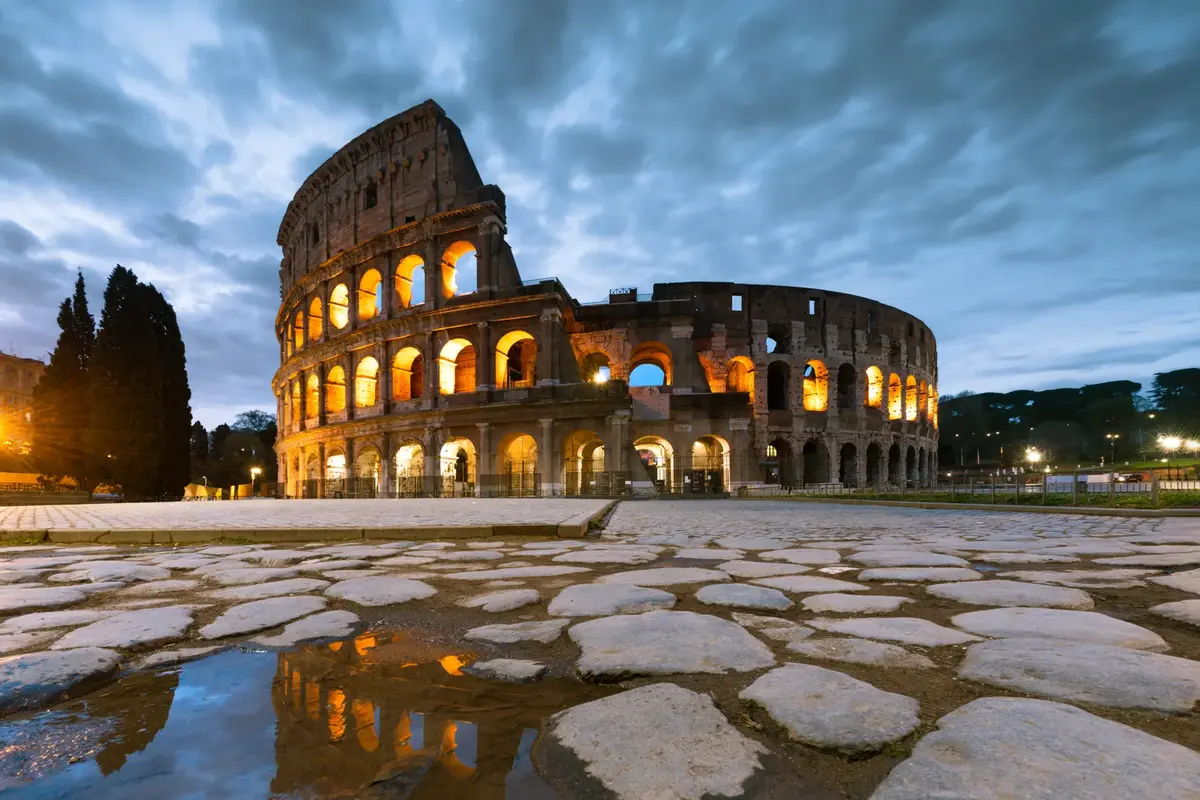Key Takeaways
- Learn about the key features and innovations in Roman architecture.
- Understand the significance of Roman architectural techniques on modern buildings.
- Gain insights into how Roman architecture reflects their society and culture.
- Discover how architectural marvels like the Colosseum impact tourism today.
Introduction to Roman Architecture
Ancient Roman architecture stands as a timeless testament to the empire’s grandiosity and sheer audacity in design and construction. Famed for its monumental structures, this era signifies a pivotal period where advancements in engineering met the heights of aesthetic accomplishment. Roman architecture, with its deft use of arches, columns, and domes, not only redefined ancient building practices but also set new precedents that continue to inspire architects today. Amidst the urban landscape of Rome lies the Colosseum — a monolithic structure that continues to captivate millions each year, particularly those interested about Colosseum tours underground, offering a fascinating glimpse into the ancient world beneath its grand facade. This landmark, like many others, remains a crucial connecting point to the empire’s illustrious past and its sophisticated societal norms.
The architectural achievements of the Romans are observed in their diverse range of structures. From the intricacies of residential villas to the vast expanses of the Senate buildings, each construction manifested not just an architectural endeavor but a clear symbol of Roman strength and stability. Aqueducts and public baths show how Romans were adept at integrating practicality with their infrastructural projects, working as much for the city’s logistical needs as for its civic life. Understanding Roman architecture extends beyond appreciating these magnificent structures; it involves recognizing the culture that left an indelible impact on how cities function and flourish even today.
Key Innovations and Techniques
The Romans were unparalleled innovators, credited with an array of pioneering developments and techniques that have formed the bedrock of modern architectural practices. Among these, the use of concrete stands out as one of their most groundbreaking innovations. This robust material allowed the Romans to craft complex and majestic structures that could endure the elements and the passage of time. The introduction of material and methodological breakthroughs enabled the construction of iconic spaces such as the vast interior of the Pantheon, whose dome remains a marvel of engineering even today.
The Roman arch is another definitive feature of their architectural style, revolutionizing the way load-bearing structures were designed. This ingenious technique facilitated the building of aqueducts — essential arteries that transported water across vast distances, showcasing a skillful blend of function and form. Aqueducts were emblematic of Roman efficiency and their ambition to sustain urban growth, significantly elevating public health and living conditions by channeling fresh water into densely populated areas. These innovations collectively contributed to the impressive layout and long-lasting legacy of Roman urban planning.
Influences on Modern Architecture
The profound influence of Roman architecture is unmistakably etched into the framework of modern building practices. The stylistic elegance of columns and the enduring strength symbolized by the Roman arch continue to be integral elements in the design of civic structures and national monuments worldwide. Modern urban planners seek inspiration from the Romans’ spatial awareness and their ability to construct grand yet functional public spaces that serve community needs.
The Roman influence extends far beyond mere aesthetics; it entails a legacy of principles that embrace utilitarian strength and creative pragmatism. Many contemporary architectural projects pay homage to Roman ingenuity, drawing directly from their balance of form and function, as seen in public arenas and government edifices. An overview of Roman architectural influences reveals how these ancient techniques are continually adapted and appreciated in current design narratives, proving their versatility and timelessness.
Reflection of Roman Society in Architecture
Roman architecture is a rich tapestry that weaves together the threads of society, culture, and governance of its time. The physical form of buildings reflected the social hierarchies and collective values held by the Roman people. Public architectural endeavors such as forums, these grand spaces were carved as platforms for civic engagement, celebration, and political discourse. They connected citizens and leaders alike, enhancing communal bonds and reinforcing cultural pride.
The carefully planned city layouts with majestic temples underscored the Romans’ reverence for deities, while the coliseums and amphitheaters epitomized the societal emphasis on entertainment and public participation. Roman baths, beyond mere places for hygiene, were social hubs where individuals from different strata of society came together, mingling and interacting. Such constructs not only narrate the architectural prowess but also illuminate the sociocultural dynamics of Roman society, revealing complex stories of power, religion, and the communal spirit of the empire.
Impact on Modern Tourism and Culture
The enduring allure of Roman architecture extends its reach far beyond the pages of history and art books; it has become a vibrant aspect of contemporary cultural tourism. Architectural sites like the Colosseum and the ruins of the Roman Forum provide modern-day travelers with immersive experiences, allowing them to step back in time and witness firsthand the grandeur of ancient Rome. These historical sites are not merely relics of the past; they offer transformative journeys into the heart of an ancient world that shaped much of Western civilization.
The influx of tourists drawn to Roman architectural sites plays a significant role in contributing to the local and national economies, infusing cities with dynamic cultural exchanges. Moreover, these visits foster a deeper appreciation for historic preservation and cultural heritage, reminding us of the Roman contribution to the architectural lexicon. Through well-organized tours and educational programs, visitors gain insightful perspectives on Roman engineering brilliance and societal structures, making every visit not only a vacation destination but a connective tissue to history and humanity’s shared past.
The Lasting Legacy of Roman Architecture
The legacy of Roman architecture transcends time, offering a wellspring of inspiration and guidance for both contemporary architects and historians who continue to explore their innovations. The wealth of knowledge embedded in these ancient structures offers timeless lessons in pragmatic beauty and structural integrity. Roman architectural philosophy prioritized functionality while embracing aesthetic elegance, a balance that remains a cornerstone of contemporary architectural education and practice.
With each towering spire and each resilient arch, the influence of Roman architecture is palpable in today’s urban environments across the globe. As cities continued to evolve and grow, the architectural techniques and philosophical standards established by the Romans continually guided the drafting of modern cityscapes. This enduring legacy of Roman architecture is a testament to its innovative spirit and its profound effects on civilization, serving as a reminder of what can be achieved when creativity and skill converge.






